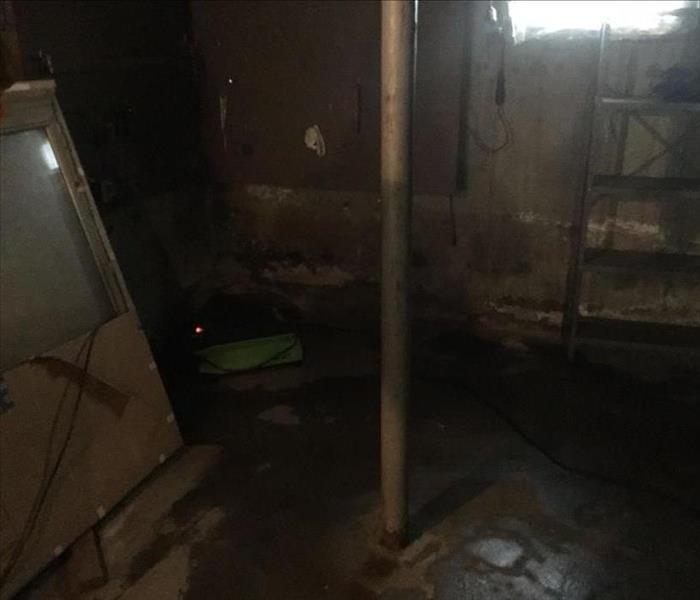How Can I Protect My Home from Coastal Flooding?
8/7/2020 (Permalink)
 Smithtown Property Owners Know to Call SERVPRO for Flood and Storm Damage Mitigation for Their Homes
Smithtown Property Owners Know to Call SERVPRO for Flood and Storm Damage Mitigation for Their Homes
Coastal Homes in Smithtown Need to Be Prepared for Flooding – Preparation Can Mitigate the Damage
Smithtown is a beautiful coastal town that is home to four pristine beaches. It is fifty miles outside of New York City and only a half-hour away from Atlantic Ocean beaches. This means flooding is something residents worry about every year.
What Causes Coastal Flooding?
Coastal flooding in Smithtown can occur from storm surges or rising sea levels. Sea levels can rise from hurricanes or tropical cyclones, resulting in storm surges. Over the last thirty-four years or so, Smithtown has experienced approximately a 5” sea-level rise according to Surging Seas Risk Finder. Flood damage here is a higher possibility as it is for any seacoast town. To compound flooding, saltwater intrusion can present its own set of problems like corrosion and rapid degradation of contents and building materials.
Am I Prepared for Flooding?
Even though you live in Smithtown near the ocean, it does not mean you have experienced flooding. You may be thinking, “I have never had that problem.” The reality of the situation is if it rains, it can flood. Just because it has never happened to you does not mean it cannot. If you live in a low-level area, you need to be prepared for a flood situation. Many factors can change the risk of flooding where you live, including:
- Rainfall
- Flood control measures
- Topography
- River flow data
- Tidal surge data
- New construction or development
Do You Have Flood Insurance?
Flood hazard maps can show the most significant flood zone risks to your community and help determine your coverage. Flood protection is not included in the typical homeowner’s policy.
What Can I Do to be Better Prepared?
Anyone who lives where coastal flooding is always a possibility should be doing certain things. Getting proper insurance, as mentioned above, is the first thing. Make sure you have emergency kits prepared should a flood warning occur, and you need to evacuate. Have a family plan in place for communication. Make sure you cover:
- Where will we meet?
- What if one of the family is not at home?
- Who is responsible for babies and very young children?
- What is an out of town contact you can use?
- What if you are at work?
If you reside in a high-risk flood area, elevate the electric panel, furnace, and water heater. Consider doing the same for appliances such as the washer and dryer. You may want to have check valves installed to prevent floodwater from backing up into your drains. Use a waterproof sealant to protect basement walls. If you live right on the coastline, you might want to consider construct barriers, although it may not always be possible.
What Should I Do if My Home is Flooded?
First and foremost, always obey warnings to evacuate. Do not risk you or your family’s lives to save possessions. Never go back into your home until you are 100% sure it is safe to return. After you have contacted your insurance company, call SERVPRO immediately. The longer the flood damage sits, the worse the problem can become.
What Will SERVPRO Do If a Flood Happens?
Typically, an assessment gets done right away, but emergency mitigation can begin right away if the situation is bad enough. Flood water is always considered black water, which is contaminated water. The first step is removing any safety hazards from the job site. Signs are posted, and the crew wears the proper PPE gear. Then our Institute of Inspection, Cleaning and Restoration Certification (IICRC) certified technicians would:
- Spray an EPA registered disinfectant on all affected areas.
- Contain the area if it looks like contaminants could spread to other areas.
- Remove any standing silt and debris. The crew can use shovels and rakes if necessary and then disposal according to local codes.
- Extract excess water. If there is standing water, truck powered and portable pumps are available to remove the water.
- Water can then be removed from the flooring. In a storm flood situation with mud and contaminated water carpeting and padding are not salvageable
- The content and structure can be evaluated to determine if the items can be decontaminated or restored. Certain things may need to be removed and replaced.
- SERVPRO always works with the homeowner and adjuster before discarding or replacing anything.
- Clean and dry interior wall surfaces and other inaccessible areas affected. Controlled demolition of damaged building materials can be required.
- Repeat disinfecting for newly exposed surfaces.
- Continue the drying process with air movers and dehumidifiers.
Restoring Your Home
Once the above takes place, the restoration process begins. Our professional crew members consult with you every step of the way. Please understand that this entire service from water removal to build back can take from some days to weeks. Our goal is to return your home to you, “Like it never even happened.” We are licensed and bonded, Contractor Licenses: General: 51995-H and Mold Remediation: 0060.
Contact SERVPRO of Greater Smithtown at (631) 265-9200 for expert flood damage service. We’re Faster To Any Size Disaster.






 24/7 Emergency Service
24/7 Emergency Service